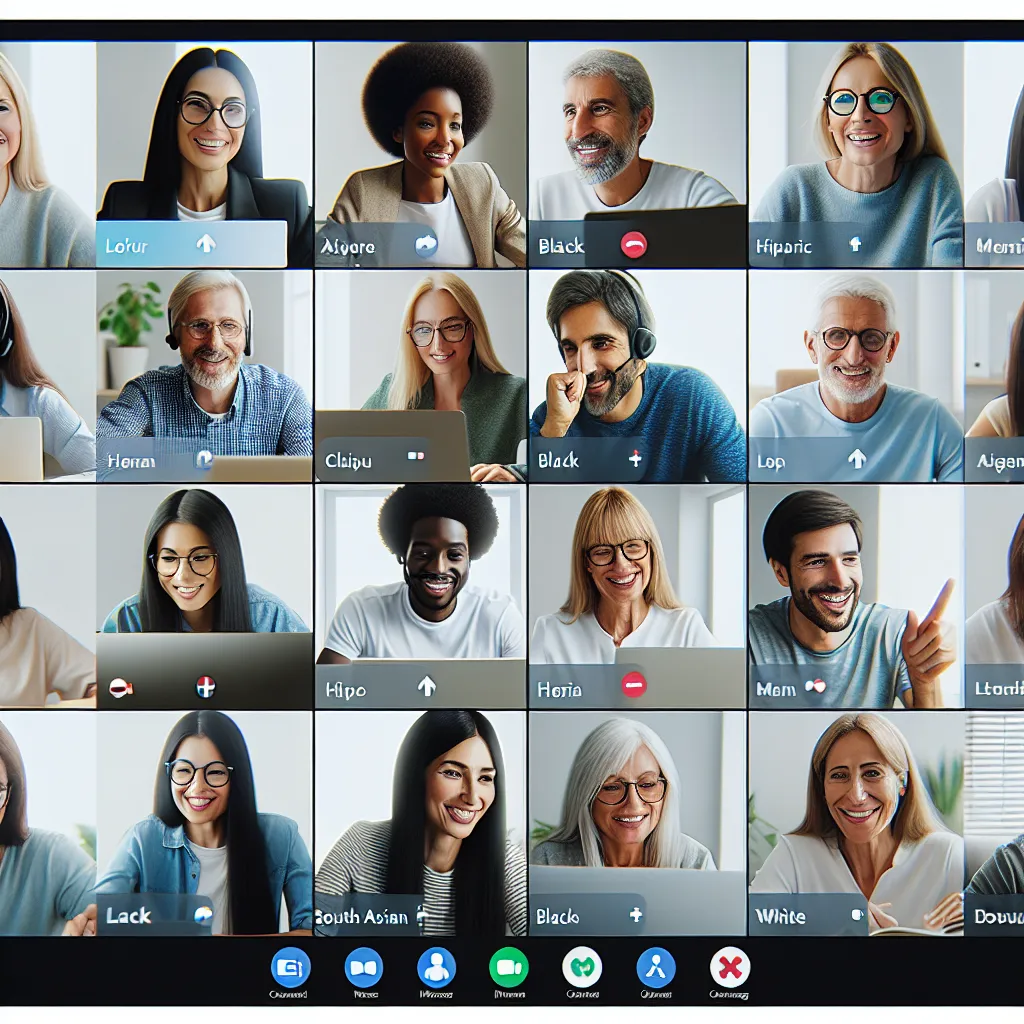Maximizing Engagement in Virtual Classroom Settings
Maximizing engagement in virtual classroom settings is essential for the success of online workshops. With the lack of physical presence, it’s crucial to employ various strategies to keep participants actively involved. One effective method is to encourage interactive discussions through the use of chat features and virtual breakout rooms. This enables participants to actively contribute, thereby fostering a sense of involvement and collaboration.
Furthermore, incorporating multimedia elements such as videos, infographics, and interactive presentations can enhance the overall learning experience. Visual aids help in maintaining the audience’s interest and cater to diverse learning styles. It’s also important for instructors to employ real-time polling and quizzes to gauge participants’ understanding and keep them engaged throughout the session.
Another way to maximize engagement is by creating a supportive and inclusive environment where all participants feel valued. This can be achieved by acknowledging and addressing individual contributions, using participants’ names, and utilizing inclusive language. Prompt feedback and open communication channels also play a crucial role in making participants feel connected and engaged.
In conclusion, a successful virtual classroom setting depends on maximizing engagement through interactive discussions, multimedia integration, and fostering an inclusive environment. By implementing these strategies, online workshops can become dynamic and engaging learning experiences for all participants.
Strategies for Effective Online Participation
When participating in online workshops, it’s essential to consider strategies for effective online participation. Engaging in a virtual classroom environment requires a proactive approach to maximize learning and collaboration. One key strategy is to actively contribute to discussions and group activities. This involves sharing insights, asking questions, and providing feedback to peers, creating a dynamic and interactive space for learning. Additionally, effective time management is crucial for successful online participation. Setting aside dedicated time for workshops, minimizing distractions, and adhering to deadlines are all critical for staying on track and fully engaging in the virtual classroom. Furthermore, utilizing digital tools such as interactive whiteboards, collaborative documents, and video conferencing can enhance participation and foster a sense of community among online workshop attendees. Embracing these strategies can lead to a more enriching and productive experience in the virtual classroom.
Leveraging Technology for Interactive Learning
In the virtual classroom, leveraging technology is essential for creating interactive and engaging learning experiences. Online workshops can benefit greatly from the use of various tools and platforms that facilitate interactive learning. Virtual whiteboards, polling software, video conferencing, and collaborative document editing are just a few examples of technologies that can be utilized to promote engagement and participation.
Virtual whiteboards allow for real-time collaboration and idea sharing, simulating the experience of working together in a physical classroom. Polling software enables presenters to gather instant feedback from participants, providing valuable insights and promoting active engagement. Video conferencing brings a human element to the virtual classroom, allowing for face-to-face interaction and communication.
Furthermore, collaborative document editing platforms, such as Google Docs or Microsoft Office 365, enable participants to work together on projects and assignments in real time, fostering teamwork and cooperation. These technologies not only facilitate interactive learning but also mimic the collaborative nature of traditional classroom environments.
By leveraging these tools and platforms, online workshops can create an immersive and interactive learning experience that promotes engagement, participation, and knowledge retention. In the virtual classroom, the effective use of technology is crucial for delivering successful and impactful online workshops.
Building a Successful Online Workshop Environment
Building a successful online workshop environment is essential for facilitating effective virtual learning experiences. Creating an engaging and interactive virtual classroom requires careful planning and thoughtful implementation of various techniques and tools. One crucial aspect of constructing a thriving online workshop environment is the use of suitable technology and platforms. Utilizing a user-friendly and reliable online learning management system (LMS) can significantly enhance the overall online workshop experience. Additionally, integrating multimedia elements such as videos, interactive presentations, and virtual whiteboards can help maintain participants’ engagement and facilitate a dynamic learning environment.
Another key factor in establishing a successful online workshop environment is the provision of clear instructions and communication channels. Setting up structured and easily accessible communication channels, including discussion forums, chat functionalities, and virtual office hours, can foster a sense of community and encourage active participation among workshop attendees. Moreover, clearly outlining the workshop schedule, learning objectives, and assessment criteria can help participants stay focused and motivated throughout the online sessions.
Furthermore, promoting collaboration and interaction among participants is essential for building a vibrant online workshop environment. Incorporating group activities, peer-to-peer evaluations, and collaborative projects can create a sense of teamwork and mutual support, mirroring the interactive nature of traditional in-person workshops. Additionally, providing opportunities for networking and social interaction can enhance the overall workshop experience, contributing to a more holistic and fulfilling virtual learning environment.
In conclusion, building a successful online workshop environment requires a thoughtful combination of technology, communication strategies, and interactive elements. By leveraging suitable platforms, fostering clear communication, and promoting collaboration, facilitators can create an enriching and effective virtual classroom that enables participants to maximize their learning potential.





